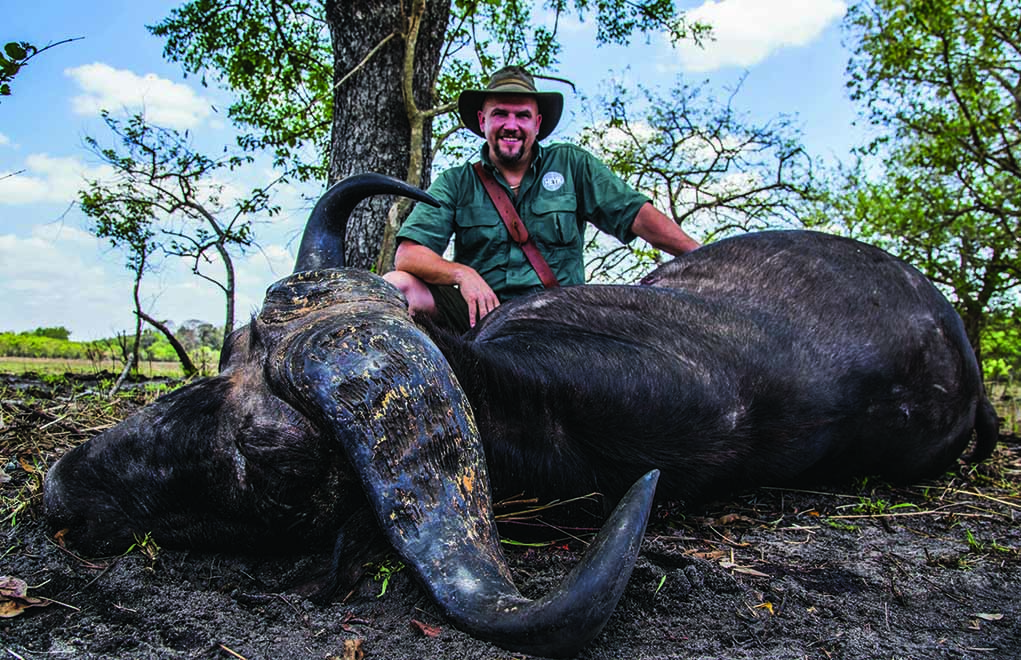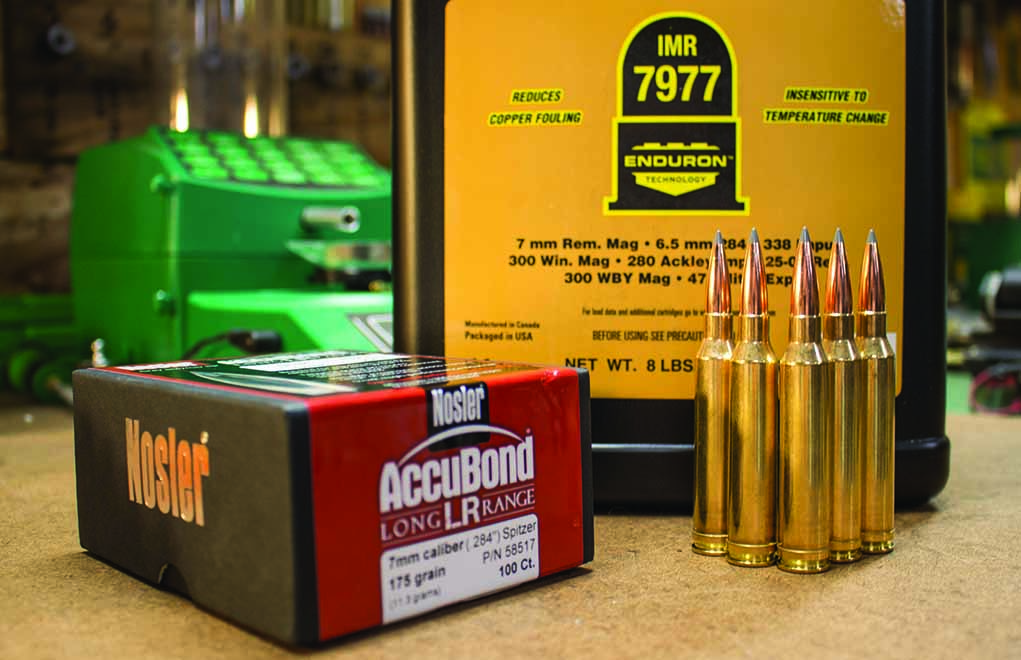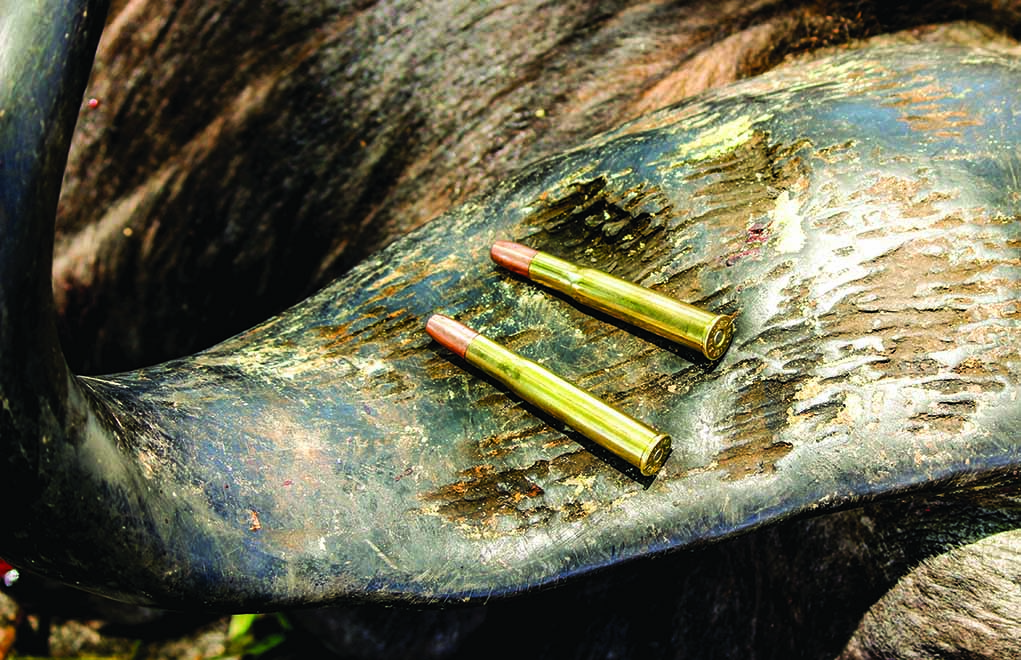
Do you trust your reloading skills enough to bet your life on them in a dangerous game situation?
Why You Should Consider Handloads For Dangerous Game:
- Utmost quality control of ammunition, personally done.
- Customized loads for your rifle, your shooting style and the game you'll pursue.
- Ability to utilize the most cutting-edge powders on the market.
- Access to bullets that aren't available in factory-loaded ammo.
I have received more than one sidelong glance when I mention that I handload my own safari ammunition. In fact, along the course of seven safaris to Africa, with the exception of a .22 LR, I’ve never used a factory round for hunting in Africa. Now, that’s not to say that I wouldn’t, because there truly is some wonderful factory ammo out there, but I prefer the reliability and flexibility of my own handloads.

All this includes both plains game and dangerous game, in calibers from .300 Winchester Magnum up to and including the .470 Nitro Express. The level of dedication is the same, no matter the quarry; each and every cartridge needs to be your best work, so that it can be counted on when it matters.
If you’re a dedicated handloader — the type that has gone beyond the hobby phase — and an equally dedicated hunter, as you must be since we’re discussing a trip halfway around the world, I see no reason not to trust your handloads. Personally speaking, I have had more issues with factory ammunition than I ever have with my own handloads. Though they have been few, I’ve seen some eye-opening problems, including entire boxes of cartridges containing the wrong caliber ammo (boxes labeled .30-06 that contained .25-’06 ammunition), primers installed upside down and different projectiles within the same box.
More Reloading Info:
- The Flexible And Forgiving .30-06 Springfield
- The .45 Colt: A Wheelgun Classic
- .300 Win. Mag.: The Answer To Most Hunting Questions
- Tips For Reloading the .223 Remington
These visible problems can easily be caught by anyone who is headed to the Dark Continent before they leave, as all your ammunition should be checked and checked again (I prefer to run them all through my rifle to ensure they feed properly), but what does that say about the things we can’t see? Is the powder charge consistent? Is the primer the right type for the cartridge? Without trying to make you stay up at night worrying, these are realistic problems.
Quality Control
When we handload our ammunition, it gives us an opportunity to examine — and control — every aspect of the cartridge, and head off any problems at the pass. If a cartridge case isn’t up to snuff, perhaps the flash hole isn’t proper, or some other parameter bothers you, simply discard it. All of the cases, inside and out, will be personally inspected by your own eyes, hand-trimmed and tuned.

It’s impossible to see what’s going on inside a factory cartridge; you simply must trust that all is well. Again, major problems are few and far between, but I feel the extra steps taken are well worth the effort. The projectiles — the only part of this entire equation which actually touches your game animal — are also subject to the inspection process. Even with the most expensive ammunition, you can’t see if there are defects on a bullet already in the case. Now, we can’t see the internal structure of a bullet, but we can weigh it to make sure that things are as equal as possible. And of course, our powder charges can all be weighed precisely, and our primers can be installed in a consistent fashion.
Custom Options
Beyond the basic parameters of consistency and reliability, we can also control the performance of the cartridge overall. For example, the traditional .404 Jeffery load is a 400-grain bullet at 2,150 fps, with the modern variation being the same projectile at 2,350 fps. If neither deliver the accuracy or performance you want, handloading can solve it. I own two rifles chambered for the old African classic, and both give the best accuracy at a muzzle velocity of 2,280 fps. Perhaps it’s a coincidence, but I might never have experienced that accuracy from any factory load.
With a bolt-action or single-shot rifle, you can easily play with the velocities; reducing the .375 H&H Magnum from 2,550 fps to 2,450 fps with a 300-grain bullet will give a marked reduction in felt recoil — for those who are sensitive — with little or no difference in field performance. In a double rifle, you will be (generally speaking) married to the velocities and bullet weight at which your double was regulated, so it’ll be an experimental procedure, fine-tuning the formula until you find the proper velocity for the regulation.

Of course, once you’ve got it, you can spend much more time practicing, as the cost of handloaded ammo for the big doubles is considerably less than that of the factory rounds. Changing powders in a double rifle cartridge can, however, change the felt recoil while maintaining consistent velocities. The .470 Nitro Express — well served by Hodgdon’s H4831SC — can attain the same velocities with a considerable reduction in felt recoil when using Reloder 15. It’ll take some experimentation, but the results are worthwhile.
Powder Possibilities
With the new powders available on the market — many of which minimize the effects of temperature fluctuation — the African heat plays less of a role in the ammunition equation. I’ve found that IMR4451, in the Enduron line, has all but replaced IMR4350 in many of my African ammunition. It offers a lower standard deviation on velocity, and works very well in the .375 H&H, .300 Winchester Magnum, .300 Weatherby, 7mm Remington Magnum and other applications where IMR4350 was the standard. I’ve used it in temperatures as high as 114 degrees Fahrenheit with no issues whatsoever. IMR4451 is just one example, and there are others which will give similar resistance to the hottest conditions.
The behemoth .505 Gibbs, with powder charges exceeding 140 grains, will certainly benefit from the temperature insensitive powders like IMR 7977 and IMR 8133. With that much powder, any benefits we can get are well worth it. Whether or not modern factory loaded ammunition takes this into consideration, I cannot say.
The Bullet Bonus
Then there’s the option of using projectiles that simply aren’t available in a factory configuration. The North Fork Flat and Cup Point solids, and their excellent soft-points, are not an option for those who shoot factory ammunition from the major players. And they are excellent bullets, with the ability to handle the largest and most dangerous game on Earth. Either they are handloaded or they’re off the menu. The same can be said for many other of the medium-bore plains game bullets: There are some wonderful hunting bullets that are simply unavailable from the ammunition factories.

Just as you would buy the best of any piece of safari gear you could afford, I’d recommend the same thing with reloading gear: This is not one of those places where you want to pinch pennies, and the economics of handloading are certainly not the central focus. While I’ve found that the average cost of the handloaded ammunition is indeed below that of the factory stuff, especially with the true big bores and the Nitro Express cartridges, the dies can be expensive — usually about the price of one box of premium ammunition — but they will give a lifetime of service if properly maintained.
In addition, some of the larger cartridges, such as the .500 Nitro Express, .500 Jeffery and the .505 Gibbs, will require larger diameter press threads to hold them. The threaded nut in your press can be replaced, and I keep a separate press for those cartridges.
So, should you trust your handloading skills enough to make your safari ammunition? I vote yes. If you trust your hunting and shooting skills enough to successfully hunt Africa — and its lineup of animals that can kill you — and you handload for other hunts, become a bit more meticulous and take the plunge. As with any hunt where you cleanly take an animal with your own ammunition, it’s a very satisfying experience, perhaps even more so because Africa is such a special place.
Editor's Note: This article originally appeared in the October 2018 issue of Gun Digest the Magazine.

Next Step: Get your FREE Printable Target Pack
Enhance your shooting precision with our 62 MOA Targets, perfect for rifles and handguns. Crafted in collaboration with Storm Tactical for accuracy and versatility.
Subscribe to the Gun Digest email newsletter and get your downloadable target pack sent straight to your inbox. Stay updated with the latest firearms info in the industry.

![Best Concealed Carry Guns In 2025 [Field Tested] Wilson Combat EDC X9S 1](https://gundigest.com/wp-content/uploads/Wilson-Combat-EDC-X9S-1-324x160.jpg)


![Best 9mm Carbine: Affordable PCCs [Tested] Ruger Carbine Shooting](https://gundigest.com/wp-content/uploads/Ruger-Carbine-Shooting-100x70.jpg)
![Best AR-15: Top Options Available Today [Field Tested] Harrington and Richardson PSA XM177E2 feature](https://gundigest.com/wp-content/uploads/Harrington-and-Richardson-PSA-XM177E2-feature-100x70.jpg)

The answer is no if you value your life.
Even experienced hand loaders who have been doing it for decades often make simple or even stupid mistakes like not realizing that all bullets, even those out of the same box because of poor quality control do not often have all the same ogives. Jamming a bullet into the rifling is no big deal if you are at the range, you simply pack up and go home and work an hour or so getting the bullet out and then cleaning out all the spilled powder so the bolt will go home and lock up but doing this out in the field on an expensive hunt would be a real disaster.
A fired case can also stick in a chamber if the case was not properly sized or it can separate if it has been hand loaded too many times or it can raise dangerous pressures if the necks have not been thinned out after one two many firings.
Too much sizing lube left on the loaded rounds can also raise pressures and lead to a blow up.
Accidentally grabbing the wrong can of powder and then using the wrong loading data can lead to a blow up ditto for a stuck case in the chamber or putting in too much powder or not enough can also lead to a catastrophic explosion. As you can see the list of potential problems are many and I have not listed all of them here.
Sometimes at home you can get away with this but when out on an expensive hunt in the middle of nowhere or being charged by an enraged beast that is about to devour you it is not the time to trust your luck to hand loads now matter how long you have been hand loading ammo.